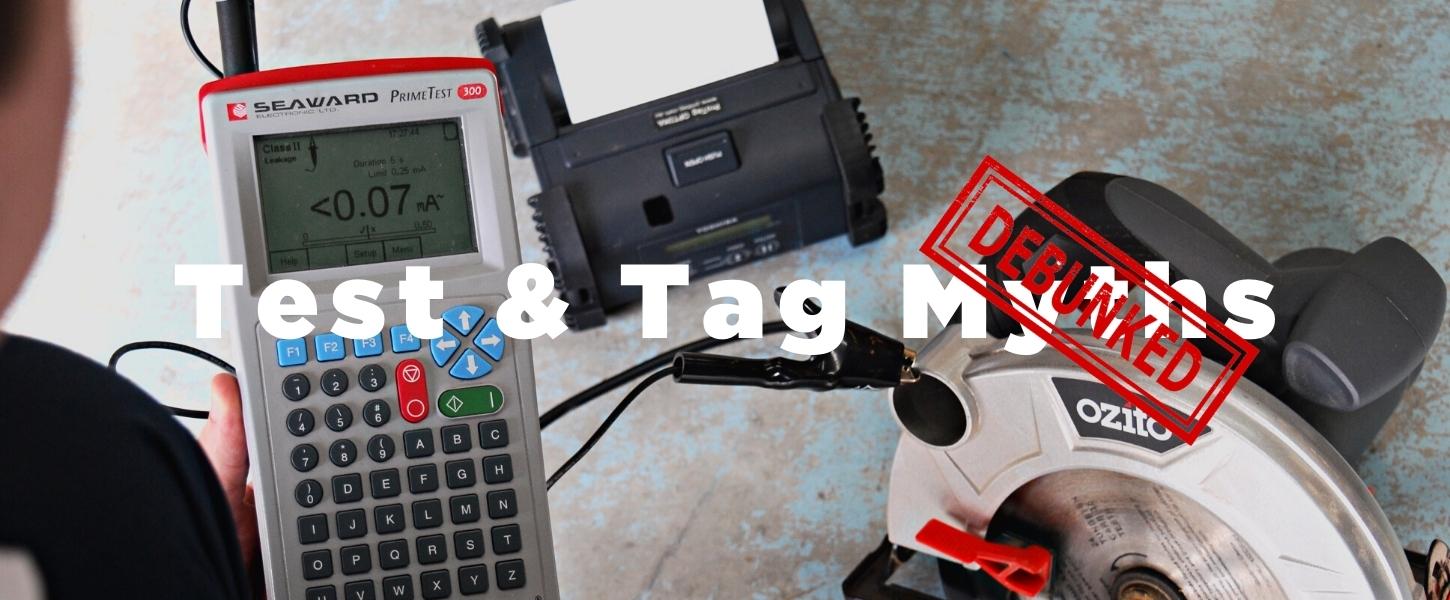We are always happy to answer any questions you may have.
Call us on 1300 848 302
Electrical equipment and safety go hand in hand, especially when you work in the Test and Tag Industry. It goes without saying how important it is to ensure that electrical equipment is fit for use given the extent of harm a faulty appliance can do to people and the workplace.
Even though testing and tagging is a straightforward process, there are still many misconceptions about it and why it’s done in the first place. Read on to know about 8 common and hugely mistaken myths circling the test and tag industry.

This is something we hear on a daily basis! Put simply, you don’t have to be an electrician test and tag, or even have an electrical background. To help explain this – according to AS/NZS 3760:2022 (referred to as 'the Test and Tag Standard'), you must be deemed as a Competent Person to carry out testing and tagging services in Australia. This basically means that by undertaking a Test and Tag Course and succesfully completing it, you can be given the title of Competent Person and you can then freely test and tag as you wish.

This one is a big no-no! Portable appliances need to be tested regularly, but this is often depending on the environment where the appliances are being used. For example, equipment that is used in the building, construction, and demolition industries, it's recommend testing every 3 months. This is mainly due to the higher chance of the equipment being damaged in this setting. In safer places like office server rooms, items such as cords and appliances can be tested yearly. Generally what you'll find is that the bigger the risk, the more frequently it will need to be tested.

In most cases this is incorrect as a computer is tested and tagged the same way we would test a toaster. If there is real concern that an appliance may be damaged due to parts of the testing process, there are ways to perform only the critical tests and omit the part that is causing concern. We offer lifetime support services, to anyone who has bought equipment through us or has completed our course. If you face any issues with testing an item and need help, you can always get in touch with us. Also, you can read more about this in our article on How to test and tag a computer.
No, it’s always a good idea to check the tag and see when the appliance was last tested. A tag does not necessarily mean that the appliance is safe as it mainly implies that the equipment was tested sometime in the past. A good practice is to check the information given on the tag, see the date it was tested on, who tested it, when is the next test due and read any remarks written. You'll be amazed and how many test tags are out of date and require a new test to be performed.
.jpg)
Actually, quite the opposite. Equipment that has hardly been used and only gets pulled out occasionally has more reasons to be tested than the appliances you’re using daily. Since you’re not using this equipment, often you don’t know what condition it’s in. Even though a visual inspection can give a great idea about its form, there is no way you can completely tell if it’s working perfectly fine until the appliance is tested and tagged.